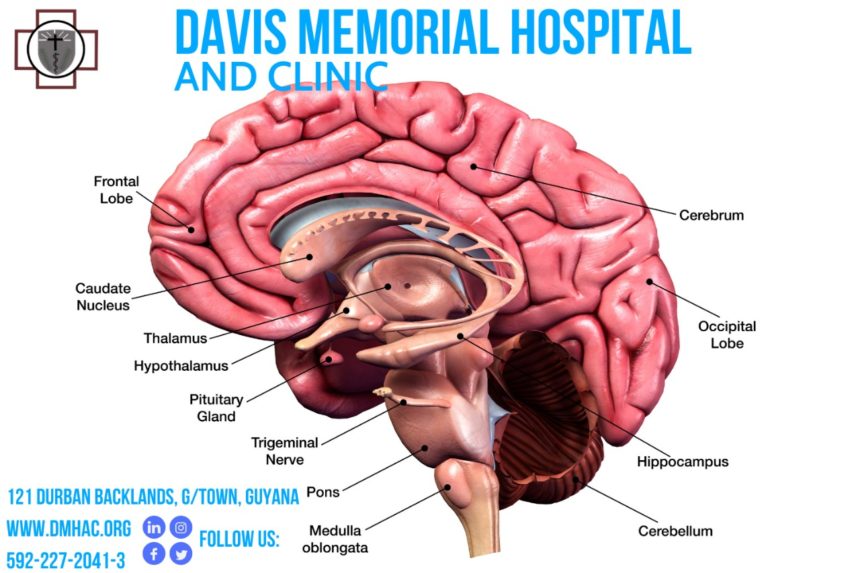What are the effects of stroke?
The effects of stroke vary from person to person based on the type, severity, location, and number of strokes. The brain is very complex. Each area of the brain is responsible for a specific function or ability. When an area of the brain is damaged from a stroke, the loss of normal function of part of the body may occur. This may result in a disability.
The brain is divided into 3 main areas:
- Cerebrum (right and left sides or hemispheres)
- Cerebellum (top and front of the brain)
- Brainstem (base of the brain)
Depending on which of these regions of the brain the stroke occurs, the effects may be very different.
What effects can be seen with a stroke in the cerebrum?
The cerebrum is the part of the brain that occupies the top and front portions of the skull. It controls movement and sensation, speech, thinking, reasoning, memory, vision, and emotions. The cerebrum is divided into the right and left sides, or hemispheres.
Depending on the area and side of the cerebrum affected by the stroke, any, or all, of these functions may be impaired:
- Movement and sensation
- Speech and language
- Eating and swallowing
- Vision
- Cognitive (thinking, reasoning, judgment, and memory) ability
- Perception and orientation to surroundings
- Self-care ability
- Bowel and bladder control
- Emotional control
- Sexual ability
In addition to these general effects, some specific impairments may occur when a particular area of the cerebrum is damaged.
Effects of a right hemisphere stroke in the cerebrum
The effects of a right hemisphere stroke may include:
- Left-sided weakness or paralysis and sensory impairment
- Denial of paralysis or impairment and reduced insight into the problems created by the stroke (this is called “left neglect”)
- Visual problems, including an inability to see the left visual field of each eye
- Spatial problems with depth perception or directions, such as up or down and front or back
- Inability to localize or recognize body parts
- Inability to understand maps and find objects, such as clothing or toiletry items
- Memory problems
- Behavioral changes, such as lack of concern about situations, impulsivity, inappropriateness, and depression
Effects of a left hemisphere stroke in the cerebrum
The effects of a left hemisphere stroke may include:
- Right-sided weakness or paralysis and sensory impairment
- Problems with speech and understanding language (aphasia)
- Visual problems, including the inability to see the right visual field of each eye
- Impaired ability to do math or to organize, reason, and analyze items
- Behavioral changes, such as depression, cautiousness, and hesitancy
- Impaired ability to read, write, and learn new information
- Memory problems
What effects can be seen with a stroke in the cerebellum?
The cerebellum is located beneath and behind the cerebrum towards the back of the skull. It receives sensory information from the body through the spinal cord. It helps coordinate muscle action and control, fine movement, coordination, and balance.
Although strokes are less common in the cerebellum area, the effects can be severe. Four common effects of strokes in the cerebellum include:
- Inability to walk and problems with coordination and balance (ataxia)
- Dizziness
- Headache
- Nausea and vomiting
What effects can be seen with a stroke in the brainstem?
The brainstem is located at the base of the brain right above the spinal cord. Many of the body’s vital “life-support” functions such as heartbeat, blood pressure, and breathing are controlled by the brainstem. It also helps control the main nerves involved with eye movement, hearing, speech, chewing, and swallowing. Some common effects of a stroke in the brainstem include problems with:
- Breathing and heart functions
- Body temperature control
- Balance and coordination
- Weakness or paralysis
- Chewing, swallowing, and speaking
- Vision
- Coma
Unfortunately, death is possible with brainstem strokes.
Source: Johns Hopkins Medicine


Leave a Reply